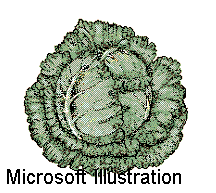
| |
 |
![]()
 Mother Earth News, Sep/Oct 1987
Mother Earth News, Sep/Oct 1987
The Easiest Seed-Saving Crops
By Nancy Bubel
- Escargot and Edive:
- Spring plantings of these biennials may perform like annuals and go to seed in summer heat. However, the leaf quality is best in fall crops. Keep autumn starts alive till spring by covering them with a deep mulch (applied when crowns are dry) or a portable cold frame. Each small seed fleck has a wispy parachute which you can rub off if you wish when you package the dry seeds.
- Lettuce:
- This self-pollinator goes to seed once the weather turns warm. First the heads elongate. Leaves turn coarse, dull and bitter, as though to protect the reproducing plant from being eaten. Then a seed stalk emerges from the leaf crown and soon bears clusters of small yellow flowers. After two or three weeks, when the blossoms change to tufts of fluff, pull off the down with its attached seeds. One stalk on a large lettuce plant can produce up to 30,000 seeds. (One of the most useful traits for which you can select is late bolting, so always save seed from the last lettuce to go to seed.)
The Arc Institute
Lettuce prefers cool temperatures, so plan to have little lettuce during the heat of summer. Plant 1/4” deep, spacing according to variety, in rows about 2’ apart. Slugs can be controlled by luring them to drown in a plate of beer set at ground level. Water lettuce at ground level to avoid fungus in the leaves, and water thoroughly and frequently. Lettuce likes Nitrogen. Lettuce bolts to seed in hot weather.